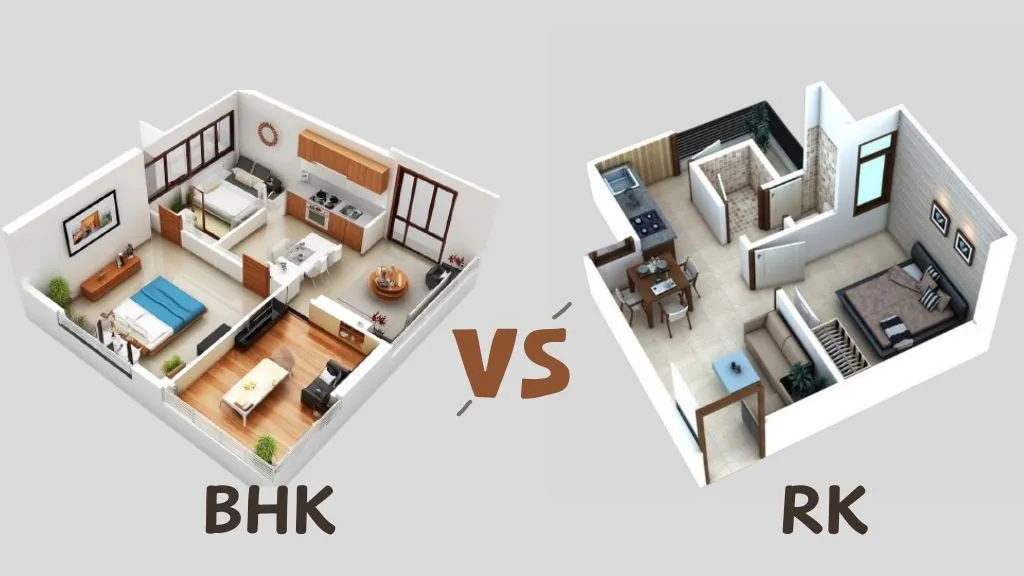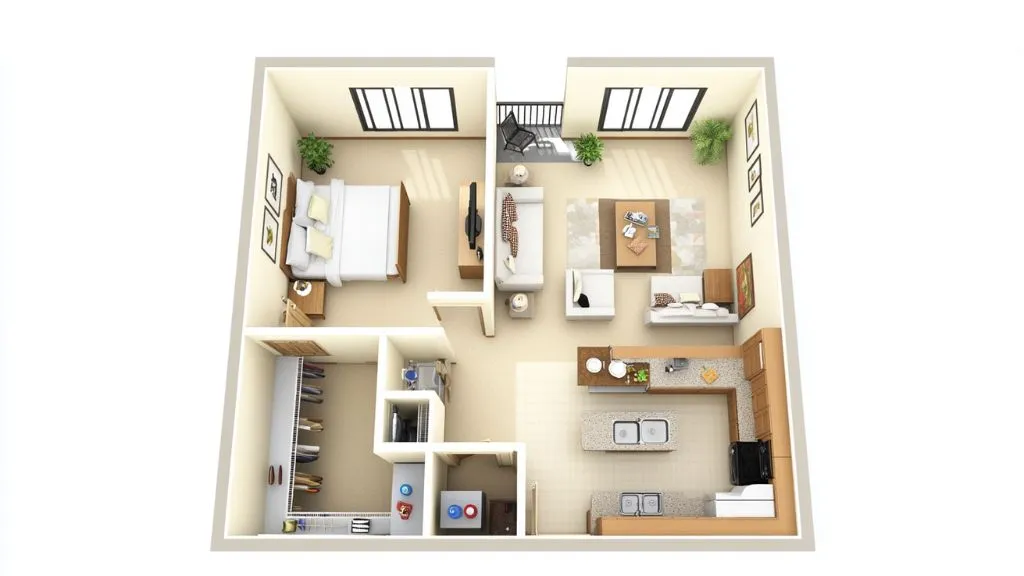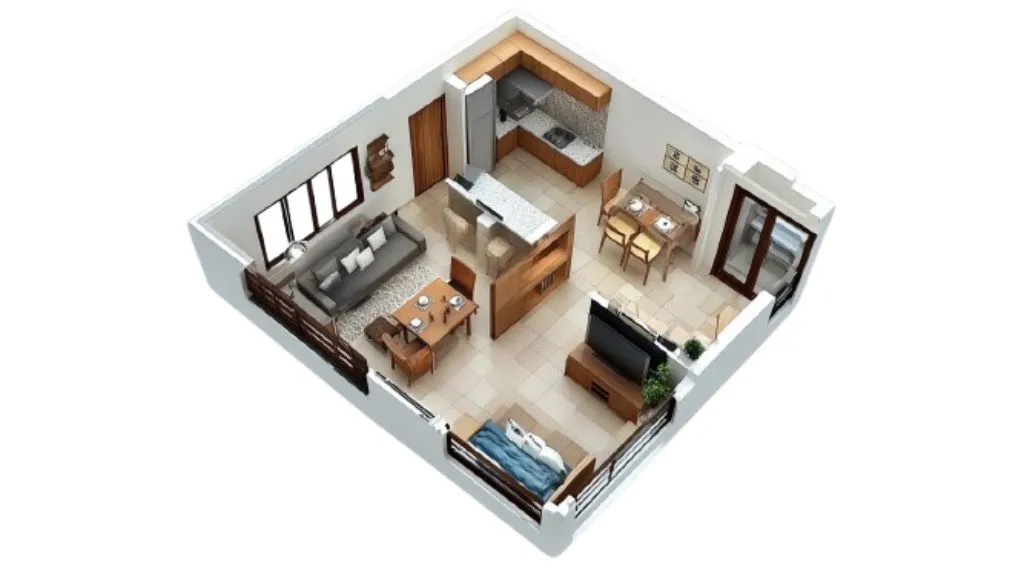Property Geek
We provide the actual and accurate information with unbiased user driven reviews to our viewers, to help them see the best and find the best!
View posts
When exploring the real estate market in India, especially in metropolitan cities like Mumbai, Bangalore, Delhi, and Chennai, you will often come across terms such as 1 BHK, 2 BHK, 3 BHK, and 1 RK apartments.
Understanding these abbreviations is essential for anyone looking to buy, rent, or invest in property. The difference between 1 BHK and 1 RK is not just about the number of rooms; it extends to factors such as space allocation, privacy, maintenance, investment value, and overall usability.
Real estate developers and buyers categorize properties based on the number of bedrooms, halls (living rooms), and kitchens to help home seekers choose according to their budget, lifestyle, and space requirements.
However, RK vs. BHK is a common dilemma, especially for first-time buyers, as both serve different purposes. 1 RK flats are compact and cost-effective, while 1 BHK apartments provide a better living experience with a dedicated hall and bedroom.
But what do these abbreviations truly mean? What are their technical aspects? And how do they differ from other configurations like 2 BHK, 3 BHK, and studio apartments? Let’s dive deep into these aspects and make your home-buying decision easier.

BHK stands for Bedroom, Hall and Kitchen, it is a standard term used in Indian real estate to indicate the number of rooms in an apartment or house. The numbers before “BHK” specify the number of bedrooms in a unit, while the hall and kitchen remain constant.
Each BHK apartment has a clearly defined space allocation, offering a structured environment for comfortable living. The more bedrooms an apartment has, the more suitable it is for families and individuals who require separate spaces for various activities.

1 RK (Room, Kitchen), commonly known as a studio apartment, consists of a single room that serves as both a bedroom and living area, with an attached kitchen and bathroom. Unlike a 1 BHK, an RK does not have a separate hall or living room, making it a more compact living arrangement.
RK flats are highly popular in urban areas, where space is limited and housing costs are high. These units are typically smaller in size, cost-effective, and low-maintenance, making them a preferred choice for students, working professionals, and bachelors who need a temporary or budget-friendly living space.
Although the terms 1 BHK and 1 RK may seem self-explanatory, their structural design, planning considerations, and functionality are what truly differentiates them.
The difference between 1 RK and 1 BHK largely comes down to space distribution and usability.
One important technical aspect of RK vs BHK is the distinction between carpet area and built-up area.
A 1 BHK apartment will generally have a larger carpet area compared to a 1 RK flat, making it more suitable for long-term living.
Privacy is a major factor in choosing between 1 RK and 1 BHK apartments.
The cost factor is a key difference between 1 BHK and 1 RK apartments.
When investing in real estate, understanding the resale value and market demand of a property type is crucial.
BHK (Bedroom, Hall, Kitchen) configurations are more than just property labels—they serve as a crucial guide in choosing a home that aligns with space requirements, budget, lifestyle, and long-term investment goals. Here’s why BHK classifications play a significant role in real estate decisions:
BHK configurations help buyers filter properties based on their living needs. Whether you’re an individual, a couple, or a growing family, choosing the right BHK ensures sufficient space for comfort, privacy, and daily activities.
Property prices vary significantly based on the number of bedrooms. A 1 BHK is more budget-friendly compared to a 3 BHK in the same locality. Defining your BHK preference early helps in setting realistic financial expectations and securing the right home within budget.
Larger BHK units often have better appreciation rates and demand in the resale market. A well-chosen configuration can ensure a profitable real estate investment, making future resale easier with higher returns.
The right BHK layout enhances daily living by accommodating modern needs like work-from-home spaces, guest rooms, or recreational areas. Choosing a configuration that aligns with lifestyle preferences ensures long-term convenience and satisfaction.
Smaller BHK units come with lower maintenance expenses, utility bills, and upkeep efforts, while larger configurations require higher investment in furnishings and maintenance. Selecting the right size balances cost-effectiveness and living comfort.
For those requiring more space and comfort, 2 BHK and 3 BHK apartments are the preferred choices.
For those exploring different types of gates for houses, it’s important to consider material, design, and security features before making a choice.
The difference between 1 RK and 1 BHK lies not just in size but in lifestyle suitability, privacy, maintenance, and long-term investment potential. If you’re looking for budget-friendly, temporary housing, a 1 RK flat is ideal.
However, if you seek comfort, privacy, and a better resale value, investing in a 1 BHK apartment is the right decision. Understanding these distinctions will help you make an informed real estate choice based on your needs and financial goals.